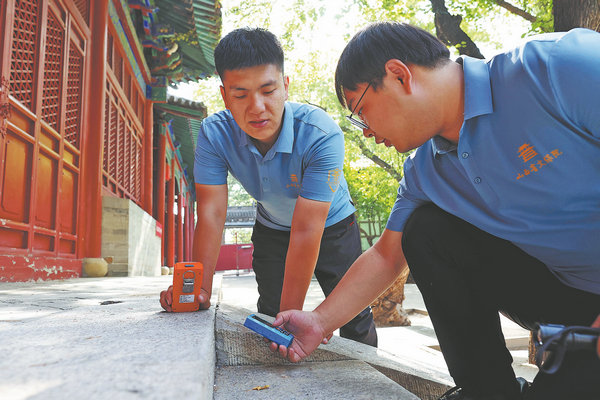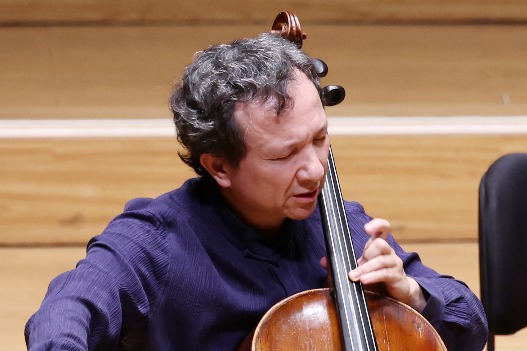Protectors give relics 'eyes and ears'
Human grit and new tech prevent theft and help maintain culturally important structures and items, report Wang Qian and Zhu Xingxin in Taiyuan.


Efforts from Wang's team paid off as the temple's restoration plan is gradually being implemented. The restoration of the main structure has already been approved and is now in the subsequent implementation phase.
Across Shanxi, there are 15 such specialized units (equipped with drones, thermal scanners and GPS), according to Yang. In the past two years, a total of eight rounds of comprehensive safety inspections were conducted at national and provincial protection units.
Between 2023 and 2024, the number of identified issues and hazards decreased from 1,256 per round to 274 per round, a reduction of 982 instances, representing a 78 percent drop. The rectification rate for issues and hazards increased from 32 percent to 71 percent, according to official statistics.
Where patrollers cannot climb, drones ascend. Nine fixed and mobile drone units now cover the province's most inaccessible sites — like the Great Wall section at Heyang Fortress in Shanyin county, Shuozhou.
In August 2024, a drone scanning the wall detected illegal excavation via thermal imaging. Within two hours, county teams were dispatched. Using 4K footage and GPS coordinates, they filled the site, while drones monitored repairs — a process repeated until compliance was confirmed weeks later.
According to local inspection teams, thermal sensors flagged illegal excavation at the fort's northern section during a 30-meter-altitude drone scan. Rapid response measures were conducted, including GPS-precise coordinates sent to the command center within minutes, county teams mobilized in under 2 hours and real-time drone monitoring guided backfilling of dug-out sections.
Simultaneously, inspectors educated nearby villagers using aerial footage showing wall vulnerabilities — merging enforcement with community engagement. In the next month's follow-up inspection, drone scans confirmed full restoration.
But Liu admits that there are limits and blind spots in technology, because there are sometimes false alarms, and when sensors cannot tell the real situation, it is humans playing a role.
"Once there was a fire alarm at a temple in Linfen, but when we sent an inspection team there, it was only smoke from cooking next door," Liu says.
"Protecting relics isn't a sprint — it's a marathon across generations," says Yang. From scaling on feet to remote monitoring, Shanxi's model proves that when technology empowers tradition, even the most fragile heritage can endure.
At this year's Cultural and Natural Heritage Day opening ceremony on June 14 in Changsha, Hunan province, the National Cultural Heritage Administration named Shanxi's smart on-site patrol model one of the Top 10 High-Quality Development Cases in the country's cultural heritage sector in 2024.






































